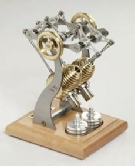a1villas.co.uk 13a.co.uk a1 cd.co.uk a1guns.co.uk a1solar.co.uk a1webcam.co.uk airpistol.co.uk
allwinds.co.uk austin-7-bits.co.uk austin7bits.co.uk basic-nutrition.co.uk basicnutrition.co.uk
beedies.co.uk bidi.co.uk biri.co.uk blu-seal.co.uk bullgroup.co.uk bullmall.co.uk
bullnet.co.uk bullybeef.co.uk cctvstuff.co.uk century-lighting.co.uk charter-me.co.uk
charter-this.co.uk charterthis.co.uk cobra-optics.co.uk cowes-boat-charter.co.uk
cowesboatcharter.co.uk easy-sales-pro.co.uk fagpack.co.uk fishpaste.co.uk flowmiser.co.uk
flybird.co.uk forum-france.co.uk forum-spain.co.uk forumfrance.co.uk forumspain.co.uk
france-forum.co.uk franceforum.co.uk gameadvice.co.uk gamo-guns.co.uk gamo.co.uk
gissowatt.co.uk henryvac.co.uk herbal-kick.co.uk holswap.co.uk investors-club.co.uk
jims-rings.co.uk lockpicks.co.uk magnofuel.co.uk mamodspares.co.uk manor-ware.co.uk
manorware.co.uk marc-james.co.uk nationaltoners.co.uk officebits.co.uk paintguns.co.uk
payment-page.co.uk pccorner.co.uk pinkjets.co.uk prizefinder.co.uk quemex.co.uk radargun.co.uk
radarguns.co.uk ragabone.co.uk scratchings.co.uk seemans.co.uk seemens.co.uk sicce.co.uk
siemen.co.uk siemenssolar.co.uk slips.co.uk solent-charter.co.uk southord.co.uk spain-forum.co.uk
spainforum.co.uk spanish-golf-villa.co.uk stickon.co.uk stirling-engines.co.uk sunnycott.co.uk
sunnycottcaravanpark.co.uk</ a> sussexpad.co.uk tinplatetoys.co.uk toypen.co.uk traction-engine.co.uk
travellers-joy.co.uk urlsales.co.uk velosolex.co.uk veronica-kits.co.uk viking-ebikes.co.uk
vikingbikes.co.uk web-camera.co.uk wight-boat-hire.co.uk wight-charter.co.uk wightboathire.co.uk
wightinvestments.co.uk wilesco-steam.co.uk xbows.co.uk yellowmaps.co.uk bullmall.com
seemens.com sexy-pills.com health-pills.com bullelec
 Home
More info
more
info2
Models
Home
More info
more
info2
Models
Stirling Engine Twentieth century revival
During the early part of the twentieth century the role of the Stirling engine as
a 'domestic motor'[20] was gradually usurped by the electric motor and small internal
combustion engines until by the late 1930s it was largely forgotten, only produced
for toys and a few small ventilating fans[21]. At this time Philips was seeking to
expand sales of its radios into areas where mains electricity was unavailable and
the supply of batteries uncertain. Philips’ management decided that offering a low-power
portable generator would facilitate such sales and tasked a group of engineers at
the company research lab (the Nat. Lab) in Eindhoven to evaluate the situation. After
a systematic comparison of various prime movers the Stirling engine was considered
to have real possibilities as it was among other things, inherently quiet (both audibly
and in terms of radio interference) and capable of running from any heat source (common
lamp oil was favored)[22]. They were also aware that, unlike steam and internal combustion
engines, virtually no serious development work had been carried out on the Stirling
engine for many years and felt that with the application of modern materials and
know-how great improvements should be possible

Encouraged by their first experimental engine, which produced 16 watts of shaft power
from a bore and stroke of 30x25mm[24], a development program was begun. This work
continued throughout World War II and by the late 1940s they had an engine – the
Type 10 – which was sufficiently developed to be handed over to Philips’ subsidiary
Johan de Witt in Dordrecht to be ‘productionised’ and incorporated into a generator
set as originally intended. The result, rated at 200 watts electrical output from
a bore and stroke of 55x27 mm, was designated MP1002CA (known as the 'Bungalow set').
Production of an initial batch of 250 began in 1951, but it became clear that they
could not be made at a price that the market would support and the advent of transistor
radios with their much lower power requirements meant that the original raison d'être
for the set was disappearing. 150 these sets were eventually produced.
 Home
More info
more
info2
Models
Home
More info
more
info2
Models
